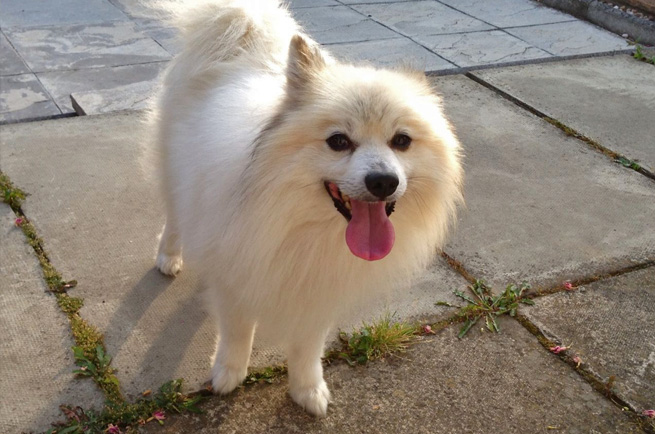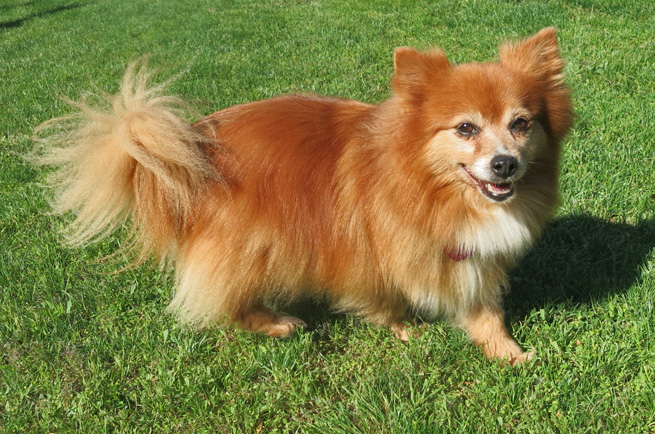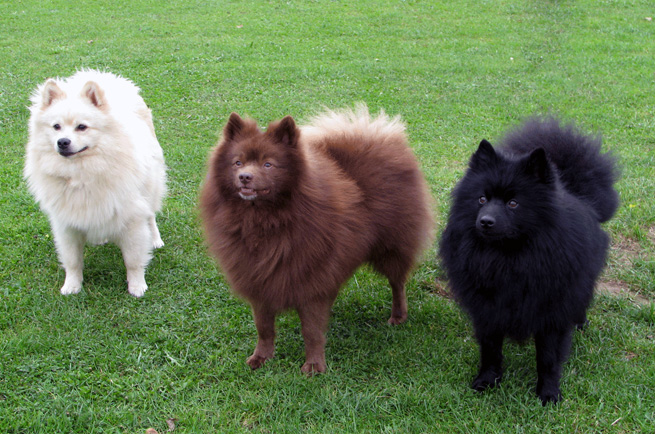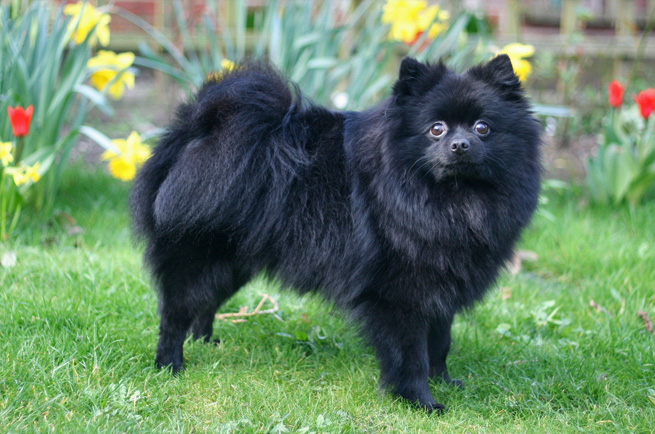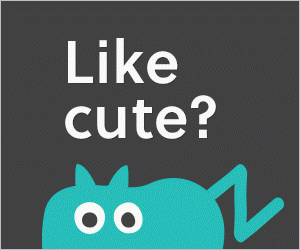German Spitz Klein
The German Spitz (Klein) is a small compact and compact dog with a loveable face. They have a long coat, a tail that curls over their back and their appearance means they can frequently be confused with the Pomeranium.
Other Names
Victorian Pomeranian, Klein Spitz.
Country of Origin
Germany
Colour
Available in all colours, including black, cream, brown, orange, sable, blue and even gold. They can be a solid colour, or partially any of the colour above on a white background, or a black and tan colour.
Size
Small
Height / Weight
Ideally the German Spitz Klein should measure between 23-29cms at the withers and weigh between 8 to 10kgs. Dogs are generally larger than bitches.
Health
As a breed, the German Spitz Klein is quite healthy though breeders will need to conscious of checking the eyes of their dogs. Common ailments include dislocation of legs joints, and jaw issues like Malocclusion.
Life Span
14-18 years
Intelligence
The German Spitz Klein is an intelligent but sometimes stubborn dog. They do best with training that rewards their good behaviour and is consistent and firm with their bad. They enjoy agility and obedience training and are frequent competitors.
Exercise
Medium
Suitability (Children)
Low
Feeding
The German Spitz do not seem to suffer from any digestive problems so will eat any type of dog food happily.
Feeding Cost
$5-$10 p/w
Other Cost
Excercise
The German Spitz Klein enjoys a run or walk each day, and like having a garden or outdoor area it can be active in. Comparatively with other breeds of their size they do not need that much exercise!
Hair Shed
Little
Ailments
As a breed, the German Spitz Klein is quite healthy though breeders will need to conscious of checking the eyes of their dogs. Common ailments include dislocation of legs joints, and jaw issues like Malocclusion.
Grooming
The German Spitz Klein will need thorough brushing each week to look after their coat, it has a tendency to get tangled, especially at the elbows and ears. It's not a good idea to widely trim the coat as it can become more difficult to manage when it regrows thicker, but a little trimming of the toes, back of the legs and anal region can help. Males will shed their fur once a year, females twice and most of the hair will be shed within these periods.
Grooming Frequency
Once a week
Trimming
Occasional
The German Spitz Klein is descended from Nordic herding dogs which we believe were taken to Germany by the vikings in the Middle ages. From there the German Spitz Klein made it's way across Europe, mixing with other herding and shepherding dogs to found the 'Spitz' type. in the 1700's the German Spitz Klein was highly fashionable in English society, with Queen Victoria having several Spitz sourced from Pomerania. The Germans were unhappy that Pomeranian term was being used to describe the German Spitz, despite it's incorrectness. Over time the Pomeranian was bred to be smaller and smaller, ending up the toy size we recognise today, while the larger sized Spitz died out. After the two world wars a breeder imported a German Spitz as seen today to reintroduce them. Initially there were a mix of sizes but they have now settled on two sizes in the UK, which are exclusively bred with their own size. Due to their mixed ancestry occasionally a Klein will appear in a Mittel litter (the larger of the two sizes) and vice versa.
comments powered by Disqus

